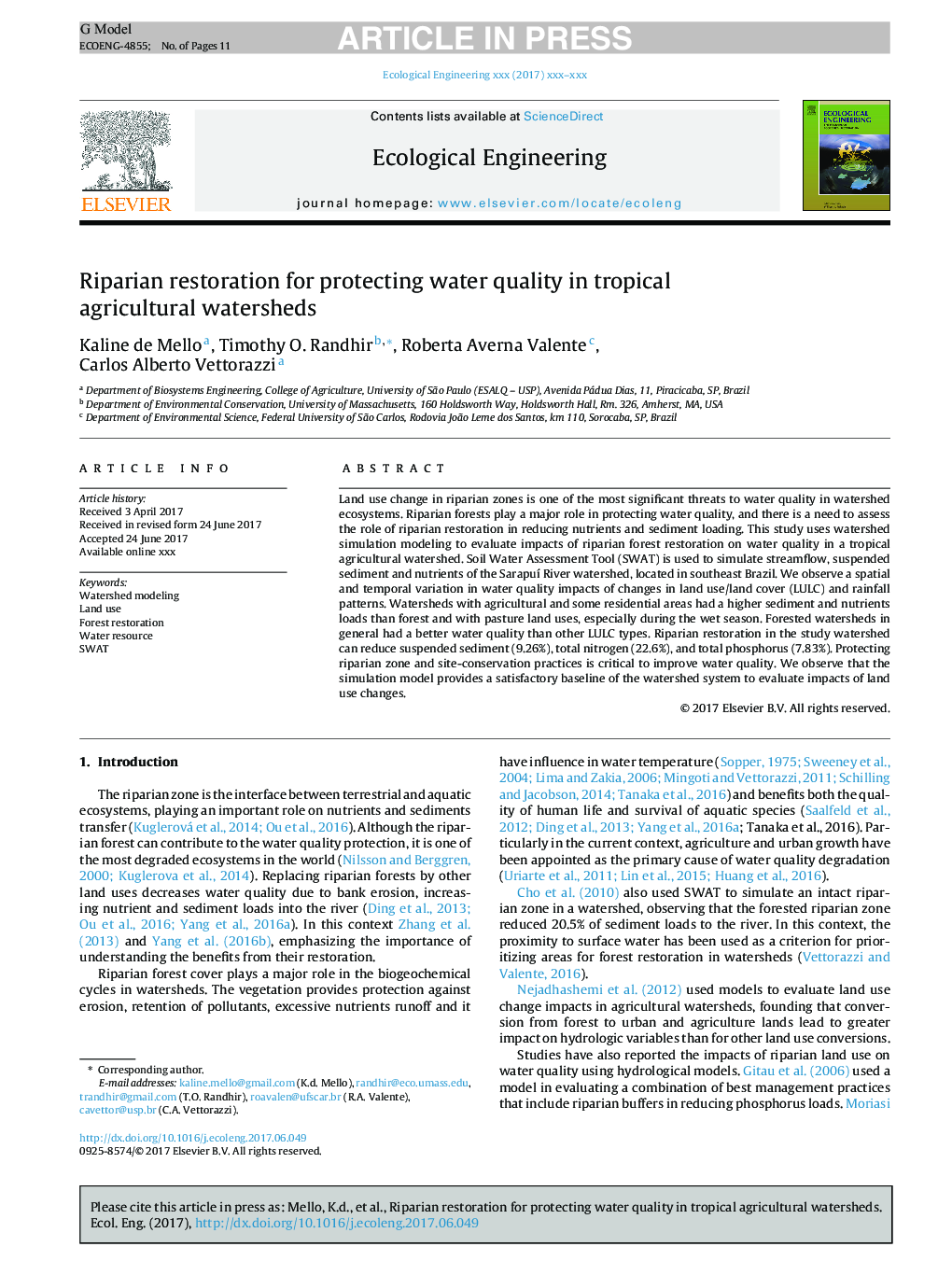| Article ID | Journal | Published Year | Pages | File Type |
|---|---|---|---|---|
| 8848194 | Ecological Engineering | 2017 | 11 Pages |
Abstract
Land use change in riparian zones is one of the most significant threats to water quality in watershed ecosystems. Riparian forests play a major role in protecting water quality, and there is a need to assess the role of riparian restoration in reducing nutrients and sediment loading. This study uses watershed simulation modeling to evaluate impacts of riparian forest restoration on water quality in a tropical agricultural watershed. Soil Water Assessment Tool (SWAT) is used to simulate streamflow, suspended sediment and nutrients of the Sarapuà River watershed, located in southeast Brazil. We observe a spatial and temporal variation in water quality impacts of changes in land use/land cover (LULC) and rainfall patterns. Watersheds with agricultural and some residential areas had a higher sediment and nutrients loads than forest and with pasture land uses, especially during the wet season. Forested watersheds in general had a better water quality than other LULC types. Riparian restoration in the study watershed can reduce suspended sediment (9.26%), total nitrogen (22.6%), and total phosphorus (7.83%). Protecting riparian zone and site-conservation practices is critical to improve water quality. We observe that the simulation model provides a satisfactory baseline of the watershed system to evaluate impacts of land use changes.
Related Topics
Life Sciences
Agricultural and Biological Sciences
Ecology, Evolution, Behavior and Systematics
Authors
Kaline de Mello, Timothy O. Randhir, Roberta Averna Valente, Carlos Alberto Vettorazzi,
